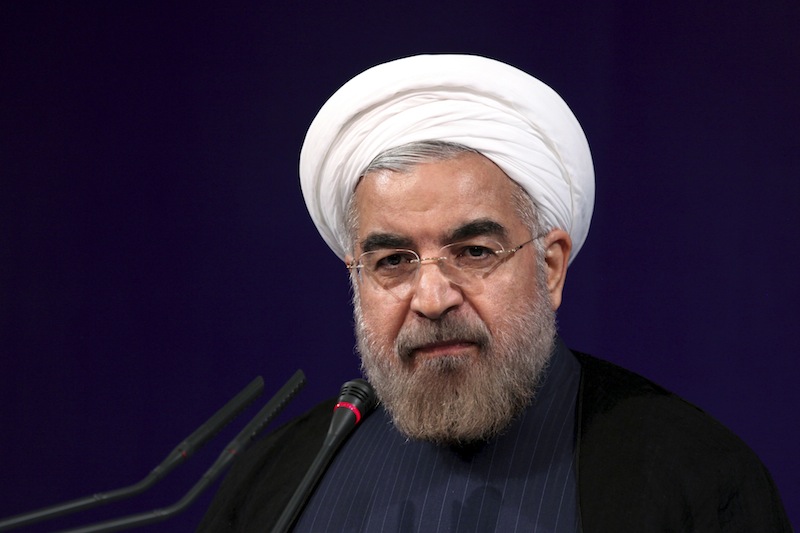A team of senior Obama administration officials went to Geneva last week to negotiate a set of constraints that would hold Iran to its pledge not to develop a nuclear weapon. As for the chorus of skeptics, it’s not clear what they want — aside from showcasing their own toughness. In the months ahead, the talks will test the intentions of Iran’s seemingly cooperative new Rouhani government, probing whether they will actually accept strict limits and intrusive verification. The process will likewise test hardliners here at home, particularly in Congress. Will they be wiling to accept Iran’s acceptance of a diplomatic deal?
As we debate the issue within the U.S., the test of intentions is about making a deal Iran can live with. Of course, all of this would be so much easier if Iran agreed to all the limits and conditions we want. Unfortunately that’s not how it works; the essence of negotiation is the trading of concessions. Such basics of deal-making might seem too simple to be worth reviewing, but the recent hard-liner warnings about an Iranian nuclear deal show the need for a refresher course.
Each side in this high-stakes process bears its own burden of proof. For its part, Iran must keep its nuclear activities within the bounds of peaceful uses, refrain from building secret facilities (as they’ve done in past), avoid accumulating enough fissile material to build a bomb, and make its facilities and personnel fully open to international inspectors. This is no small order and constitutes the substance of the talks (Barbara Slavin outlines the latest negotiating positions over at Al Monitor).
In return, Iran wants proof that providing cooperation will indeed end its international isolation. The six key powers negotiating with Iran must show that the process isn’t a trap or a trick, that it will be a two-way street with Iranian good behavior being rewarded. This is one of the problems with the relentless demands and skepticism from the right wing, which leave Tehran wondering whether any level of cooperation would satisfy the U.S. or if the real issue is implacable hostility.
The good-faith test for Iran’s negotiating partners: relief from the sanctions that have cut Iran’s financial links with the rest of the world, starved the government of oil export revenue — as well as, arguably, nudging it towards its newly constructive posture. This is a tricky one. The sanctions regime is a delicate structure, both in its mechanics and the diplomatic coalition-building it took to put them in place. The long history of Iranian duplicity over their nuclear program means that sanctions should only be eased in exchange for significant steps on their part. But as I say, this is a tricky one and we can’t simply stonewall Tehran either. Even in the best-case scenario, the process of negotiating and implementing meaningful constraints on Iran’s nuclear program will be arduous; if the U.S. tries to withhold sanctions relief until the very end, that will feed Iranian suspicions of a trap. Bradley Klapper and Matthew Lee of the Associated Press have reported on Obama administration efforts to devise a sanctions “spigot” that can be turned on or off based on Iran’s compliance.
So it’s hard to know when sanctions should be lightened, and by how much. Much easier, though, to understand that increasing sanctions at this point would confirm Tehran’s fears that negotiating in good faith will get them nothing. Guess what hawks in Congress are trying to do? I like how Matt Duss puts it:
And then there’s Senator Mark Kirk, who, apparently unsatisfied with conservative efforts to redefine appeasement as diplomacy, recently attempted to re-re-define appeasement as “not piling new sanctions on Iran right now.”
Nor are hardliners any more reasonable when it comes to their red lines for an agreement with Iran. By insisting that Iran permanently shut down all of its uranium enrichment, they are setting an impossible condition and, in effect, rooting for failure. Colin Kahl and Alireza Nader’s “Zero-Sum Enrichment” post on this issue over at ForeignPolicy.com is a must-read, but here’s the punch line:
The Iranian regime has invested enormous amounts of political capital and billions of dollars over decades to master the knowledge and centrifuge technology associated with uranium enrichment — and nothing will put that genie back in the bottle. Indeed, one is hard pressed to find a single bona fide Iran expert on the planet that believes Tehran would accept a diplomatic deal with the P5+1 that zeroed out enrichment for all time.
Experts in the field of negotiation theory often stress the concept of the “best alternative to no agreement.” In other words, how much will it hurt if I don’t reach a deal? For any consequential issue, then, it’s smart to ask what the alternative is. As my friend Heather Hurlburt shows, the case for reaching an agreement gets stronger, not weaker, the more skeptical you are of Tehran’s intentions:
If the Iranian regime is going to hanker for nuclear weapons capability no matter what, would we prefer to have its activity completely unsupervised and unknown? Or would we prefer to have inspectors intrusively swarming over the country’s facilities, catching sight of things they weren’t supposed to see, getting tips, and able to offer advance warning should Iran mount an uranium enrichment rush for a bomb?
For my part, I’ll take that deal over the right wing’s tough guy posturing any day of the week.
Shorr career-long analyst and commentator on foreign policy and national security. Follow him on Twitter @David_Shorr.






